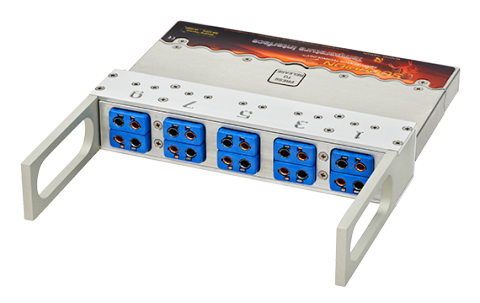Humidity sensors are essential tools used to monitor, analyze, and measure the humidity throughout baking. As any baker knows, the moisture content in the heating process is vital in ensuring your baked goods come out in optimal condition, ensuring they aren’t too dry, cracked, broken, or unsafe for consumption. Insufficient moisture ruins the batch, while too much moisture leaves bakers with a product that could cause potential health and safety risks. To monitor these levels, however, you need to have real-time insights into the oven conditions that your products are exposed to. The best way to gather actionable data in an extreme heat environment is by using high-temperature humidity sensors for baking.
Reading Thermal has been designing and manufacturing state-of-the-art humidity sensors for baking for decades. Our Digital Humidity Sensors possess the quality of engineering needed to withstand the conditions of even the hottest ovens while measuring environmental conditions and factors with pinpoint accuracy. We understand that the best way to analyze moisture conditions inside your ovens is through real-time data capable of compiling, charting, and displaying data in intuitive visual formats. With Reading Thermal’s sensors, you can know that your product quality standards are upheld while ensuring safety and compliance.
The Impact of Moisture on the Baking Process
Moisture control is essential to the success of any baking process. The humidity along any stage of the baking process is a delicate balance between how much is present in the baked goods and the surrounding environment. Too much or too little moisture can cause a variety of issues ranging from reduced shelf life, product spoilage and waste, undercooked or overcooked products, and even safety risks. It’s also important to note where moisture builds along the process, as excessively moist or dry periods affect the overall quality, baking efficiency, and product output.
Controlling Humidity in High Temperature Ovens
Humidity is a parameter in high- and low- temperature environments, such as those found in ovens, proofers, or cooling tunnels. However, building humidity sensors to withstand a higher temperature range is a must to ensure the reliability and accuracy of results. Reading Thermal’s SCORPION® 2 Digital Humidity Sensors have been engineered to withstand temperatures up to 660°F without sacrificing accuracy or performance. This ensures you get the real-time data needed for taking advantage of the current baking process and making any necessary adjustments.
How moisture is applied or removed at any given stage of the baking process has a different effect on what you’re baking. Various baked goods require different humidity profiles to ensure they’re being treated with the correct application of humidity, such as through steam injection. A cookie requires different humidity parameters to prevent case hardening than bread that wants a glossy crust. The SCORPION® 2 Digital Humidity Sensor allows bakers to accurately monitor varying humidity levels throughout the baking process, providing unique insights into how your ovens operate that might have otherwise been impossible to ascertain using other methods.
Ensuring you’re measuring, compiling, and analyzing accurate real-time data about oven moisture levels is critical to producing the highest quality baked goods possible. Using the right high-temperature humidity sensors for baking processes makes all the difference. If you’re interested in our services, call us at (610) 678-5890 Ext. 2, or contact us online for more details about our innovative products.

